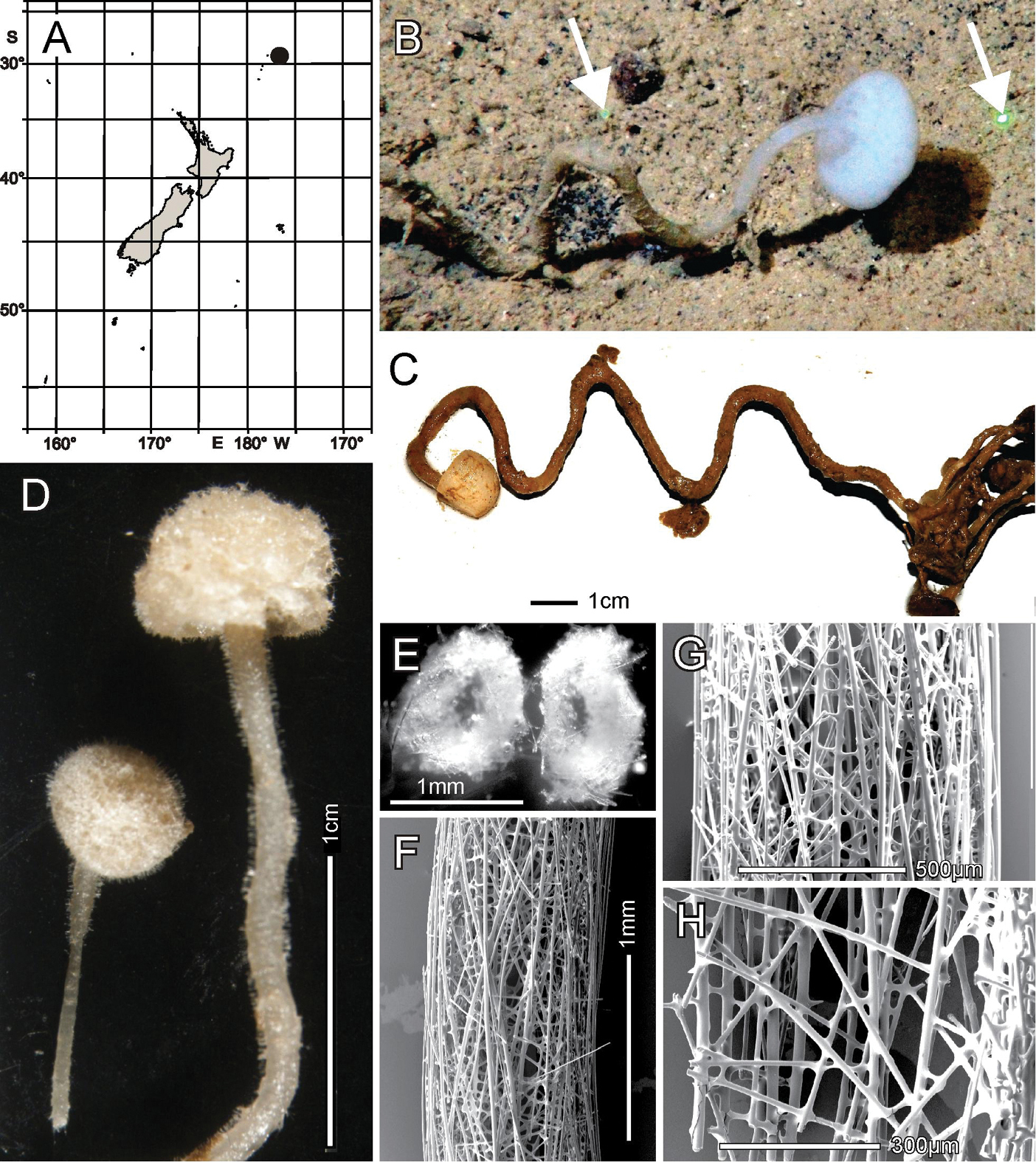
|
||
|
Caulophacus (Caulophacus) serpens sp. nov., NIWA 126084, distribution, skeleton, and morphology A distribution in New Zealand waters, collection location of holotype on the Kermadec Trench slope B in situ image of the largest specimen body and the irregular undulating stalk associated with it. The laser spots indicated by the arrows are 6.24 cm apart C deck image of the same with smaller specimens in the stalk tangle at right (image by PJS) D two smaller bodies and their stalks, previously attached to the main mass, used for spicule analysis E cross sections of the uncleaned stalk of the larger specimen in D; F Acid-cleaned part of the stalk of the same (SEM) G closer view of the outer stalk surface showing most fused diactins oriented nearly parallel to the stalk axis (SEM) H close view of the internal stalk surface showing most superficial spicules oriented at large angles to the stalk axis (SEM). Image B captured by ROV Team GEOMAR, ROV Kiel 6000 onboard RV Sonne (voyage SO254), courtesy of Project PoribacNewZ, GEOMAR, and ICBM. |